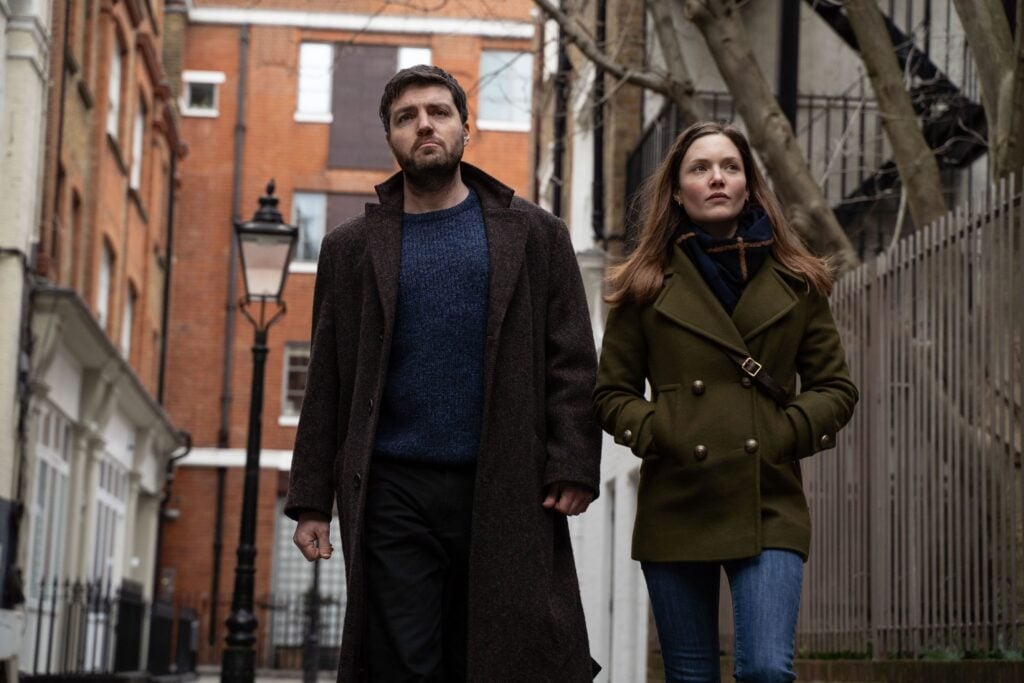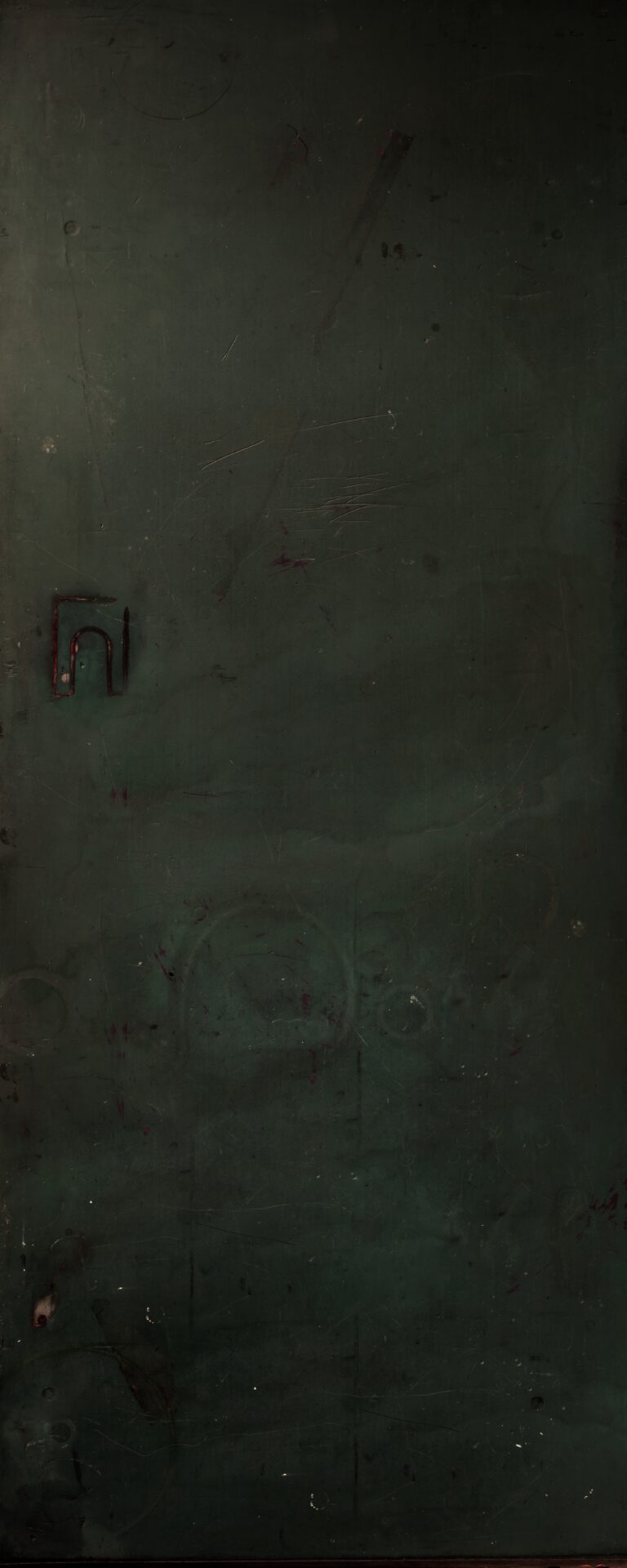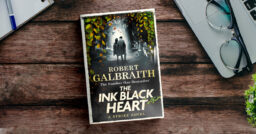The Epigraphs of Troubled Blood
Knights, Quests and Foul Deeds
Almost all the epigraphs and the title of Troubled Blood are drawn from The Faerie Queene, the poem by Edmund Spenser from which is the longest poem in the English language, and a literary triumph of the Elizabethan age.
Spenser wrote the poem to find favour in the court of Queen Elizabeth I and published the first three books in 1590, then all six in 1596. He dedicated the poem to her, and she is personified in Gloriana, the Faerie Queene herself. She must have been pleased with the work because she awarded him a pension of fifty pounds.
His language, harking back to the first of the great English poets we know by name, Geoffrey Chaucer, was a bit archaic even when he wrote it, and can be tough for modern readers to get to grips with. That and its length often puts readers off, but once you get used to the language barrier, The Faerie Queene is an epic of adventure and romance. It’s full of allegorical characters representing both virtues and vices, in a twisting, rich story told in a verse form Spenser invented for himself. There are giants, witches, shapeshifters, princesses, squires, fantastic beasts and knights both male and female.
Book I, from which many of the epigraphs are drawn, follows the trials of the Redcrosse Knight, and his beloved Una, with whom he eventually defeats the dragon laying siege to her parents’ castle. Later books follow the female knight, Britomart who represents chastity, and Sir Artegall, who battles for justice.

Opening
There they her sought, and euery where inquired,
Where they might tydings get of her estate;
Yet found they none. But by what haplesse fate,
Or hard misfortune she was thence conueyed,
And stolne away from her beloved mate,
Were long to tell…
– Edmund Spenser, The Faerie Queene Book 4 Canto VI
‘…But is it realistic,’ she said, looking from Robin to Strike, ‘… to think that you’ll achieve what the police haven’t, after all this time?’
Troubled Blood, Robert Galbraith
‘Realistic?’ said Strike. ‘No.’
The investigation into the fate of the missing GP, Margot Bamborough, begins when her daughter, Anna approaches Strike at his local pub, The Victory, in Cornwall. Strike is in St Mawes visiting his aunt Joan who has just received a cancer diagnosis, and Anna and her partner have a second home in the nearby town of Falmouth. Anna spots the now famous detective having just visited a medium who told her she’d get a ‘leading’ which might lead to answers as to her mother’s fate. She decides to approach him.
But Margot disappeared in 1974 and no trace of her has been discovered since, so Strike and Robin know that the chances of finding what happened to her are very slim. The investigation, like the Faerie Queene, will prove epic taking the detectives over a year, during which they’ll face many other personal and professional challenges inside and outside the agency.
Book 4 of The Faerie Queene from which this quotation comes involves, among a lot of fighting, tournaments and romantic complications, the female knight Britomart searching for Amoret, the missing betrothed of another knight Scudamore. It’s significant too perhaps, that Britomart fears Amoret might have been killed and eaten by a savage man in the woods. Similarly, the detectives must explore the theory that the serial killer Dennis Creed could have kidnapped and murdered Margot.
For, if it were not so, there would be something disappearing into nothing, which is mathematically absurd.
– Aleister Crowley, The Book of Thoth
The second epigraph for the whole book, and the only one not from the Faerie Queen is from Aleister Crowley’s Book of Thoth which was published in 1944. Crowley was a magician and occultist who founded his own religion drawing on spiritual practices from across the world, from yoga to alchemy, and a fair amount of sex magic. He was seen as a scandalous and dangerous man in his day and was a source of public fascination.
Though his work doesn’t appear in any other epigraphs, he is a presence throughout the investigation. The troubled Bill Talbot, the policeman who first investigated Margot’s disappearance while having a mental breakdown, was heavily influenced in his disordered thinking by Crowley’s writing. His attempts to solve the case using astrology and magic failed, and disrupted the investigation, though Strike and Robin come to see he was a good detective, even in the midst of his struggles. Crowley makes another appearance late in the book when Dennis Creed quotes him to a sceptical and well-informed Strike.
Chapter 1
And such was he, of whom I haue to tell,
The champion of true Iustice, Artegall …
– Edmund Spenser, The Faerie Queene Book 3 Canto I
‘… in spite of the perpetual shadow of the heavy beard, carried about him that well-pressed and fundamentally clean-cut air that suggested ex-police or ex-military.’
Troubled Blood, Robert Galbraith
There are three epigraphs from the Faerie Queene which mention the knight Artegall and point towards Strike, a modern champion of justice. In the epigraph to Chapter 21, Artegall, like Strike, weighs the evidence, then in the epigraph to Chapter 48 Artegall also obeys the commands of Gloriana, The Faerie Queene as Strike carefully follows the wishes of his aunt Joan for her funeral and scattering of her ashes.
Having a thirst for justice is not the only parallel between Artegall and Strike. Artegall uses his brains as well as his physical power to discover the truth and perhaps it’s significant given Strike’s tortuous relationship with his ex-fiancée, Charlotte, that Artegal is enslaved by an Amazonian at one point because of his weakness for female beauty. It’s also worth noting that Britomart, the ‘Robin’ of the poem, saves Artegall from permanent bondage.
Artegall is also brother to a Cornish King, though he was stolen by an elf as an infant and raised in faerie land. That would please Dave Poleworth, Strike’s oldest friend who insists Strike is Cornish, rather than English, and Strike does seem to embrace his heritage when, much to Robin’s amusement, he starts singing ‘the Song of the Western Men’ over fish and chips in Skegness.
Chapter 3
But now of Britomart it here doth neede,
The hard aduentures and strange haps to tell
– Edmund Spenser, The Faerie Queene Book 4 Canto V
‘Every letter from Matthew’s lawyer caused Robin additional stress, rage and misery.’
Troubled Blood, Robert Galbraith
Britomart, the brave and beautiful knight who believes she is destined to marry Artegall, faces endless challenges in The Fairie Queene. While saving other knights, and the unfortunate Amoret, Britomat is forced to battle a variety of monsters, magicians and savages. At one point she also has her heart broken when she believes Artegall no longer loves her.
At the beginning of the investigation, Robin is sitting in her ancient Land Rover on a quest to find out if ‘Tufty’, their client’s husband, is being unfaithful. Though Tufty is supposed to be in Glasgow, Robin tails him to Torquay and watches him eat pizza with his second family. It reminds her of the last time she saw her husband, Matthew. Since she left her marriage during the Chiswell investigation (Lethal White), Robin has been struggling to finalise her divorce, but Matthew, who seemed open to a quick no fault divorce over a pizza in London a year ago, is now determined to make the process as painful as possible. She’s also exhausted having worked a twenty-day stretch, covering for Strike while he spends time with his aunt and uncle in St Mawes. Added to that she’s also dealing with Saul Morris, their good-looking new subcontractor who makes over personal remarks, and generally makes her uncomfortable. Their new office manager, Pat, is good but she and Strike are not getting on.
At least the long drive pursuing Tufty means Robin can meet Strike in Falmouth and hear about the search for Margot Bamborough from her daughter first hand.
Chapter 16
Behold the man, and tell me Britomart,
If ay more goodly creature thou didst see;
How like a Gyaunt in each manly part
Beares he himselfe with portly maiestee…
– Edmund Spenser, The Faerie Queene Book 3 Canto III
She seemed to have forgotten over the previous six days how large he was. Hunched over the newspaper, he reminded her of a black bear, stubble thick on his face, tucking into a bacon and egg ciabatta roll, and Robin felt a wave of liking simply for the way he looked.
Troubled Blood, Robert Galbraith
Strike’s absences to visit his aunt means sometimes Robin doesn’t see him for days and looks at him afresh when they do meet. Robin struggles with her feelings for Strike during the year of the Bamborough investigation, fearing she has fallen in love. Their friend, Ilsa Herbert, makes no secret of the fact she’d like to see them as a couple, but her matchmaking embarrasses them both.
Robin is following a lead on another case, tracking a possible stalker they’ve nicknamed ‘Postcard’, and on her way to the National Gallery when Strike gets off the overnight train from Cornwall they meet in Notes cafe on Charing Cross Road to discuss their progress. Like Artegall, Strike is large man, but Robin compares him to Saul, their creepy subcontractor. Later, Robin reflects that in spite of his looking like a black bear, Strike has never in all their years together made her feel uncomfortable.
In the poem, after the narrator praises the noble deeds love can inspire, Britomart relates how she saw a man in a magic mirror and visited Merlin to learn who he was. The epigraph comes from Merlin, telling her the man she saw was Artegall, and she is destined to marry and fight alongside him. He also describes the fate of the nation from the time of the poem to the age of Elizabeth.
Chapter 25
All those were idle thoughtes and fantasies,
Deuices, dreames, opinions vnsound,
Shewes, visions, sooth-sayes, and prophesies;
And all that fained is, as leasings, tales, and lies.
– Edmund Spenser, The Faerie Queene Book 2 Canto IX
Oakden then posed a series of rhetorical questions that he and his foolhardy publishers appeared to think circumvented libel laws.
Troubled Blood, Robert Galbraith
It’s not just Robin and Strike who are reflected in the epigraphs. The people and situations the detectives encounter often too have parallels in the Elizabethan tale of knightly adventures. While Strike watches a nondescript house in Stoke Newington, looking for reasons why a rotund and respectable CEO might be being blackmailed by his shifty underling (the agency nicknames the underling Shifty), Strike reads a copy of Whatever Happened to Margot Bamborough? written by C.B. Oakden, son of the receptionist at the surgery where Margot worked. It’s a deeply unreliable and poor-quality work by a man obviously keen on cashing in on a tragedy. The book, which Robin found referenced in the first edition of a book on the serial killer Dennis Creed, was pulped before publication after Margot’s friend, Oonagh Kennedy and Margot’s husband, Roy Phipps, sued the publisher because of the scandalous and unprovable accusations it contained.
The passage in The Faerie Queen comes from a description of the castle of Alma, which the knights Guyon and Arthur visit. The castle mirrors the human body and is full of characters representing everything from appetite to emotions. The room in the epigraph is of one of three occupied by wise men, advisors to Alma, and this disorientating room houses one who can see into the future. Around him false stories and conjectures buzz like flies.
Chapter 41
With that they gan their shiuering speares to shake,
And deadly points at eithers breast to bend,
Forgetfull each to haue bene euer others frend.
– Edmund Spenser, The Faerie Queene Book 4 Canto II
‘And don’t,’ bellowed Robin from behind him, ‘buy me any more fucking flowers!’
Troubled Blood, Robert Galbraith
Max Priestwood, Robin’s landlord and flatmate wants to meet Strike as he is going to play a detective on a new TV show. Strike arrives drunk at the dinner party, then talks about the assault on Robin in front of her brother, Jonathan, and the slightly annoying friends he’s brought with him to visit from university to make a point. Robin loses her temper. After his selfish performance at the flat, she follows him into the street and tells him exactly what she thinks of his behaviour towards her, their co-workers and the world in general. In the morning, knowing he needs to repair their relationship if he wants to continuing enjoying their soothing and satisfying camaraderie and aware of the justice of many of her charges, he calls to apologise.
In the Faerie Queen, the narrator is praising those who can bring harmony out of discord as two knights, former friends, battle over False Florimell. The knights are evenly matched, and the fight lasts a lot longer than Strike and Robin’s and involves a lot more blood. Even worse, the woman over whom they are fighting is a duplicate of the real Florimell, created by a witch. Jonathan, Robin’s brother is as unlucky in love as those fighting over the False Florimell. He likes the girl, Courtney, he’s brought to stay at her flat but is afraid she’s now into his other irritating friend Karl, and Courtney certainly gives off False Florimell vibes.
Chapter 45
Of auncient time there was a springing well,
From which fast trickled forth a siluer flood,
Full of great vertues, and for med’cine good.
– Edmund Spenser, The Faerie Queene Book 1 Canto XI
‘Trying to walk off her memories, she crossed a small stone bridge spanning the slow-flowing River Leam, which was spotted with clumps of duckweed, and passed the colonnade of the Royal Pump Rooms, where Satchwell’s exhibition would open the following day.’
Troubled Blood, Robert Galbraith
Robin is overnighting in Leamington Spa, while Strike is in Cornwall arranging his aunt’s funeral, to attend the opening of an exhibition where Paul Satchwell is exhibiting his work. She takes Crowley’s Book of Thoth with her after discovering who the mysterious Schmidt is who appears in Bill Talbot’s notes. In the hotel she lays out the tarot cards on her bed. She gets a series of cups, indicating water, which is appropriate seeing she is in a spa town. Not that she finds the stay particularly relaxing; the regency architecture reminds her unpleasantly of Bath where Matthew was at university with his affair partner Sarah Shadlock.
The following day when Robin meets Satchwell she learns that Aleister Crowley was, like Satchwell, born in the town.
The epigraph comes from towards the end of Book 1, when Redcrosse and Una return to her native soil to rescue her parents from a dragon with wings like sails, rending claws and scales like steel armour. The battle goes badly for Redcrosse, but the dragon’s last blow throws him into the waters of the healing well and the following morning, Una sees her beloved revived and back to battle the dragon again.
Chapter 58
His louely words her seemd due recompence
Of all her passed paines: one louing howre
For many yeares of sorrow can dispence:
A dram of sweet is worth a pound of sowre:
Shee has forgott, how many a wofull stowre
For him she late endur’d; she speakes no more
Of past…
Before her stands her knight, for whom she toyld so sore.
– Edmund Spenser, The Faerie Queene Book 1 Canto III
Robin was so amazed, she couldn’t speak. Never, in four years, had Strike come close to telling her what she was to him. Fondness had had to be deduced from offhand comments, small kindnesses, awkward silences or gestures forced from him under stress.
Troubled Blood, Robert Galbraith
Carl Oakden proves as slippery and unpleasant in person as he comes across in print. He manipulates Strike into meeting him near Spencer House on the same night his estranged father, rock star Jonny Rokeby, is holding a party there to celebrate the fiftieth anniversary of his band the Deadbeats. Strike has been refusing to attend, increasingly irritated at the pressure from his half-siblings and parent.
Strike and Robin meet Oakden in the American Bar at the five-star Stafford Hotel. The conversation becomes combative, and when Oakden hurls insults across the bar, Strike reacts. Robin ends up with a black eye, but back at the office eating curry and drinking whiskey in the darkening room, Strike tells Robin, finally, about the pressure his father has been putting on him and the painful details of his first encounter with his famous father and his involvement in saving Charlotte from her latest suicide attempt. Robin suggests talking to her might be a better way to deal with his feelings than inviting a stress-induced heart-attack or trying to punch witnesses. In the intimacy of the office, and with the good understanding between them reestablished, Strike tells her she is his best friend. Then Sam Barclay charges in and switches on the lights.
Spencer House, on St James’s Square in central London, has nothing to do with poet beyond the name, and the house is owned by the Earl Spencer, brother of Diana, Princess of Wales. Edmund Spenser, the poet, died in poverty in London but was buried near to Geoffrey Chaucer in Westminster Abbey. Other poets, possibly including Shakespeare, threw pens and poetry into his grave.
The woman listening to the lovely words in Spenser’s poem is Una. Unfortunately, the speaker is not the Redcrosse Knight, as she thinks, but rather the villain of the piece Archimago, in disguise. Like Robin, Una is not at the end of romantic adventure as yet, but she does best and exposes Archimago at the end of Book 1 and is officially betrothed to her knight.
Chapter 64
…his hand did quake,
And tremble like a leafe of Aspin greene,
And troubled blood through his pale face was seene
To come, and goe with tidings from the heart,
As it a ronning messenger had beene.
– Edmund Spenser, The Faerie Queene, Book 1 Canto IX
Douthwaite hitched up his waistband and threw a wild look outside the net curtains, as though contemplating flight.
Troubled Blood, Robert Galbraith
The passage from Spenser where the phrase ‘troubled blood’ appears comes from the encounter Una and Redcrosse have with Despair. Despair is a cursed man in a darksome cave surrounded by the bodies of those he has convinced to end their lives. Hearing his arguments for suicide is what causes Redcrosse to go pale, then red as he listens while trembling like a leaf. Such is the power of Despair, Redcrosse is on the point of killing himself before Una snatches the knife from his hand.
Douthwaite is listening to hard truths, not the malicious arguments of a cave dwelling monster as he trembles and blushes. The detectives discover him in Skegness with a wife who is something of a dragon, but given the secrets Douthwaite has kept, she has plenty of reason to breath fire.
Douthwaite is not the only character involved in the investigation with troubled blood. Margot’s husband suffers from von Willebrand Disease, a bleeding disorder, and according to his mother became a haematologist by profession as a result.
Chapter 71
Such is the face of falshood, such the sight
Of fowle Duessa, when her borrowed light
Is laid away, and counterfesaunce knowne.
– Edmund Spenser, The Faerie Queene, Book 1 Canto VIII
She simply looked at him out of those round blue eyes that nobody who hadn’t heard this conversation could possibly mistrust.
Troubled Blood, Robert Galbraith
While Una, beloved of the Redcrosse Knight, is honest and open (one thing, like her name suggests), Duessa, one of the villains of the poem is two-faced (duel natured, again as hinted at by her name). During the poem she proves a master of disguise and claims the Redcrosse Knight as her own. Una exposes the lie, but Duessa causes problems for Britomart too. When, in the poem, Duessa is finally confronted with her many crimes, some are moved to pity her, but Artegall remains convinced of her guilt and clear that justice must be done.
The killer of Margot Bamborough is finally revealed as a master of disguise too, and a person who has always managed to present a face to the world which is the opposite of their true self. The pattern of their victims too, perhaps, echoes the jealousy and cruelty of Duessa in the poem.
Edmund Spencer’s epic turns out to be a rich and rewarding companion to Troubled Blood, but while the knights Artegall and Britomat are by the end of the poem betrothed, Strike and Robin remain only friends, even if they are friends on the way to the Ritz.
In the last lines of the book, another writer makes his way into the story, Tolstoy. Strike’s old friend Dave Poleworth quotes from one of the Russian novelist’s masterpieces, Anna Karenina, in the opening chapter, talking about two men Mazankov and Krupov mentioned in the novel who ruined their careers over women. Seeing his partner delighted by his sudden and unusual thoughtfulness, the names reoccur as Strike and Robin head to the Ritz in the golden glow of the sunset.




